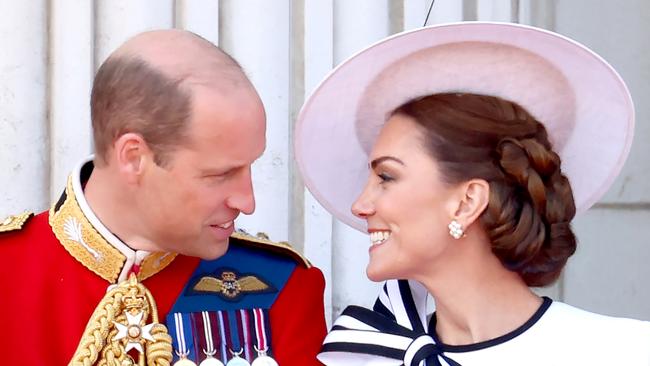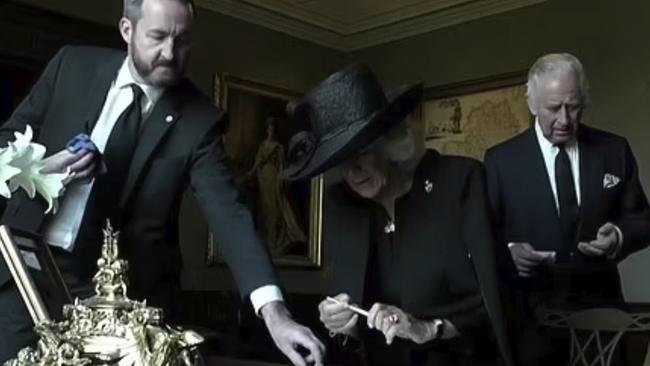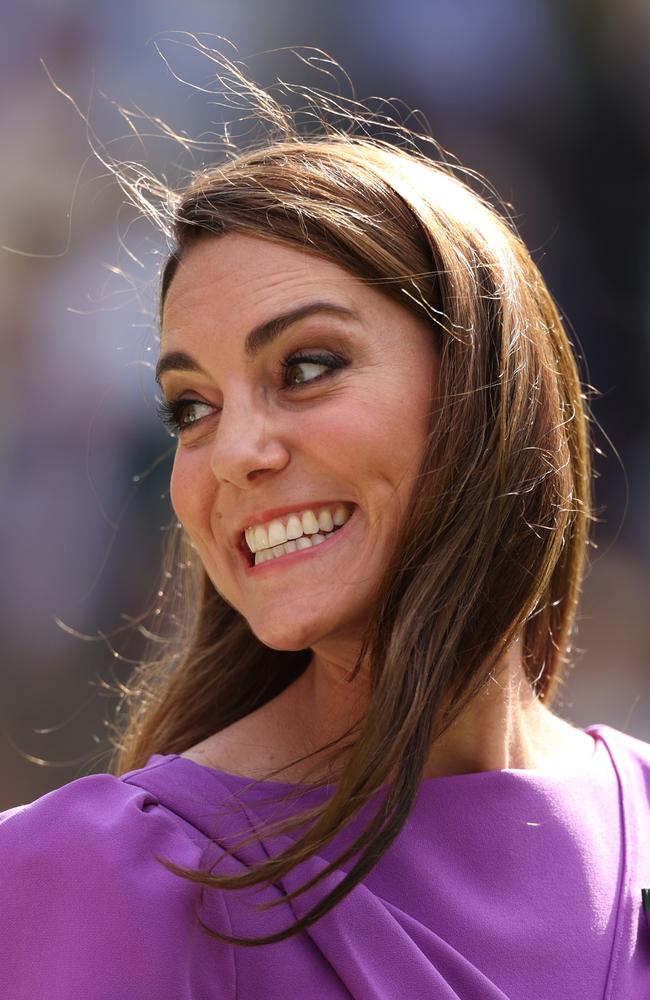‘Serious threat’: Fresh fears for Princess Kate emerge
An “alarming” detail in a new report details a grave and very real danger facing the Princess of Wales and her family.

Royals
Don't miss out on the headlines from Royals. Followed categories will be added to My News.
COMMENT
The Duchy of Cornwall’s annual report makes for some dull-as-traditionally-harvested-ditchwater reading. (Unless you are really into peat? No judgement here. We do not bog-shame at news.com.au).
However, this year’s release came with a particularly intriguing morsel from Alastair Martin, the Duchy of Cornwall’s outgoing secretary and keeper of the records: Prince William conducts all of his business via WhatsApp.
Given that King Charles famously had a meltdown while trying to work a fountain pen, the contrast with his son could leave some writers inclined to indulge in a vapid waffle about the irrevocable march of change and modernity.
Instead, let’s channel Le Carré. That phone of William’s isn’t just a handy symbol of generational change, but also represents a new and ever more serious threat for the royal family.
The Prince of Wales might like to manage his 135,000 acres in between sending giggling Love Island memes in his Old Etonians group chats via his phone, but the royal family’s technology take up means they also face the increasingly alarming possibility of being hacked.
Already, they are trying to head off this new danger.

At the same time the 120-page Duchy report was landing, so too was the annual Sovereign Grant report which details how Buckingham Palace spends the $170 million it receives annually from the British government for official business. (And not, to say, add to Queen Camilla’s extensive collection of Toby jugs).

The Grant report admits that the possibility of “Royal Household systems or data being compromised/interrupted/damaged” could result in “reputational damage”.
The report also reveals the Palace is increasingly focused on protecting royal phones, computers, iPads and the King’s iPod touch from nefarious mouse-clicking forces and that over the last 12 months, the palace has been “prioritising the Royal Household’s cybersecurity defences”.
It’s not paranoia or because Prince Andrew once clicked on an email from a Nigerian Prince offering to supposedly pay him in gold Krugerrands, but because this is an all too real issue.
The barbarians are already at the gated firewall.

Ahead of the King’s coronation last year, there were fears that hackers from Russia and Iran could launch a cyber attack to take the livestream of the event down in what would have been a “reputational coup” for the axis of sociopathic, sports jacket-loving heads of state. (The Met Police managed to foil similar plots in 2018 when it came to the broadcast of the Duke and Duchess of Sussex’s wedding, and also in 2011 ahead of the Prince and Princess of Wales’ “I dos”).
In October last year, Charles & Co’s official website – royal.uk – was attacked by Russian cyber nasties who took the site offline for 90 minutes.
In March this year, after six weeks of increasingly hysterical conspiracy theories about Kate the Princess of Wales swamping the internet, senior British government figures briefed the Telegraph about fears China, Russia and Iran were fuelling the Kate madness.
“Hostile states”, a senior government source warned, “could be involved in whipping up the frenzied media attacks on the Princess”.
The potential vulnerability of the royal family’s data was confirmed when, also in March, it emerged that Kate’s medical records had been targeted. Three members of staff at the private hospital where the Princess had had surgery were revealed to be under investigation for allegedly trying to access the princess’ information.

For decades, the physical safety of the House of Windsor has been a very real question – however, with these instances piling up, what is becoming clear is that their digital lives now pose a major security headache too.
And there could be no higher-value target than Kate or William.
Their tech savviness or lack thereof was embarrassingly on show after the princess’ slightly shoddy Photoshopping skills were revealed after an image she had edited was “killed” by the major photo agencies for being “manipulated”.
Just imagine, for a heart-stopping moment, what would happen if some state actor managed to access the princess’ or the prince’s phones or laptops, or even those of their aides.
The only appropriate reaction to even the notion is to immediately recreate Edvard Munch’s The Scream.

At a time when the UK government has pledged $24.7 billion to help the unbelievably courageous Ukrainians hold off the brutal Russian maw, just think about what havoc Vladimir “Facelift” Putin could wreck should his army of basement-dwelling keyboard warriors manage to crack a few royal iPhones.
Given that bluntly attempting to subvert democracy and disrupt Western society seem to be a couple of Vlad’s favourite things (no raindrops on roses here), what better way than digging up enough dirt to truly bury Buckingham Palace?
Even if none of the laundry they uncovered was in any way dirty, even the Russians getting their hands on all the cringey love-heart emojis that William and Kate probably send each other all day or Princess Anne’s shopping list (“carrots, lucerne hay, family-sized Fruit Loops”) would be a Kremlin win. The UK would be left looking weak and unable to protect their own. (Now imagine if they got their hands on Prince Harry, the Duke of Sussex’s phone. It would be The Scream to the power of pi).
The royal family’s digital vulnerabilities must be legion and the palace is already stepping up its game, or at least trying to.

The Grant report specifies a “core focus” over the last year has been “prioritising the Royal Household’s cybersecurity defences” and that this “will continue to remain a priority for the foreseeable future”. The coming year will see a “a large focus” placed on the “continued development” of Crown Inc’s cyber-defences.
One of the methods they are using is to ensure that “all end user devices built to NCSC (National Cyber Security Centre) hardened design”. Translation: William and Kate’s iPhones are probably crammed full of Bond-worthy tech to ensure some bored Iranian hacker will never get access to the princess’ Notes app. (I believe there’s a half-written haiku about William’s bottom in there and her already-completed Christmas shopping list).
Charles already has one cold – or perhaps lukewarm – war trundling on with a couple of residents of Santa Barbara county, and now with this Grant report, we can see he faces another one coming from the direction of Red Square or Tehran or Beijing.
Given the possibility of World War WhatsApp, suddenly the King’s leaky, troublesome fountain pen and doing business via vellum isn’t looking so ridiculous after all.
Daniela Elser is a writer, editor and royal commentator with more than 15 years’ experience working with a number of Australia’s leading media titles.
Originally published as ‘Serious threat’: Fresh fears for Princess Kate emerge





